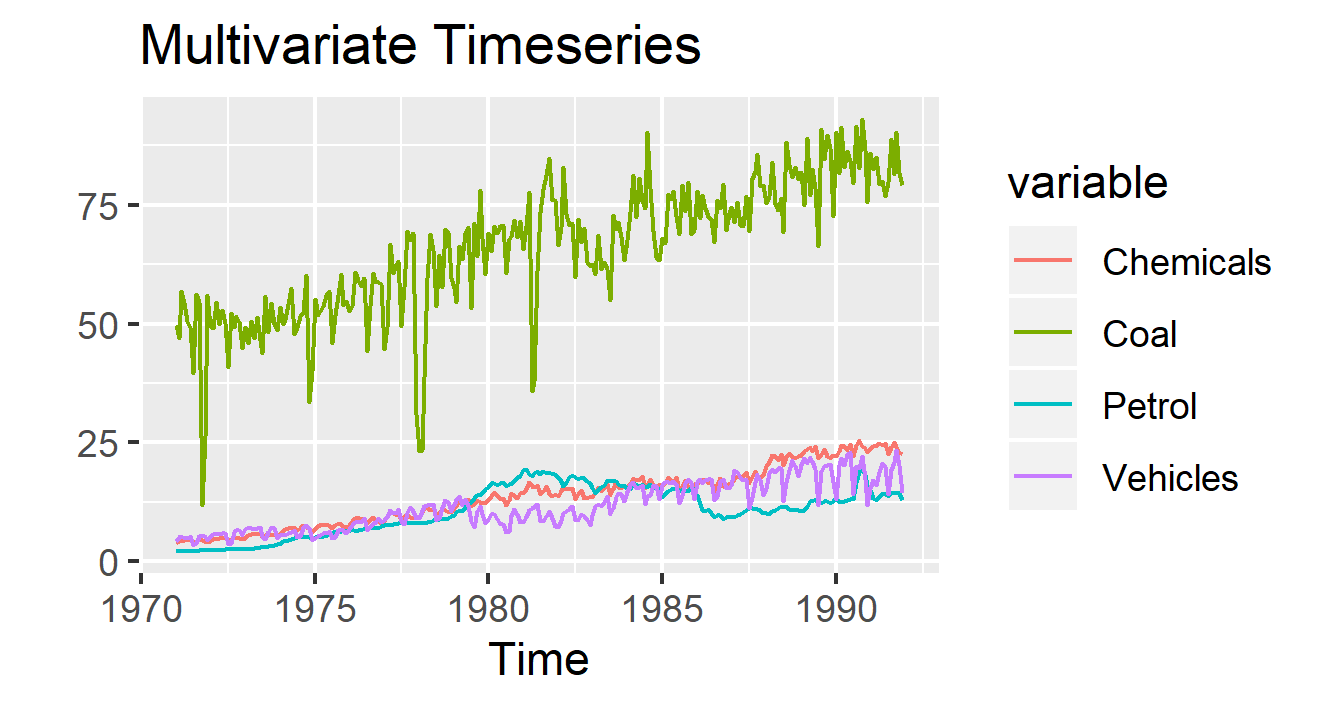Temporal prediction / forecasting for mlr3
Time series analysis accounts for the fact that data points taken over time may have an internal structure (such as autocorrelation, trend or seasonal variation) that should be accounted for. This package extends the mlr3 package framework by time-series prediction and resampling methods.

Installation
Install the development version from GitHub:
remotes::install_github("mlr-org/mlr3temporal")Forecasting
Currently the following methods are implemented:
Tasks
| Id | Code | Type |
|---|---|---|
| airpassengers | tsk("airpassengers") |
Univariate Timeseries |
| petrol | tsk("petrol") |
Multivariate Timeseries |
Learners
| Id | Learner | Package |
|---|---|---|
| forecast.auto_arima | Auto Arima | forecast |
| forecast.arima | Arima | forecast |
| forecast.average | Average | base |
| forecast.VAR | Vector Autoregression | vars |
Measures
| Id | Measure | Package |
|---|---|---|
| forecast.mae | Mean Absolute Error | base |
| forecast.mape | Mean Absolute Percentage Error | base |
| forecast.mse | Mean Squared Error | base |
| forecast.rmse | Root Mean Squared Error | base |
Resampling Methods
| Id | Resampling | Package |
|---|---|---|
| forecast_holdout | Holdout | base |
| forecast_cv | Rolling Window CrossValidation | base |
Code Example
library(mlr3temporal)
task = tsk("airpassengers")
learner = lrn("forecast.auto_arima")
learner$train(task, row_ids = 1:20)
predictions = learner$predict(task, row_ids = 21:55)
measure = msr("forecast.mae")
predictions$score(measure)
autoplot(task)Resampling
Holdout
Split data into a training set and a test set. Parameter ratio determines the ratio of observation going into the training set (default: 2/3).
task = tsk("petrol")
learner = lrn("forecast.VAR")
resampling = rsmp("forecast_holdout", ratio = 0.8)
rr = resample(task, learner, resampling, store_models = TRUE)
rr$aggregate(msr("forecast.mae"))Rolling Window CV
Splits data using a folds-folds (default: 10 folds) rolling window cross-validation.
task = tsk("petrol")
learner = lrn("forecast.VAR")
resampling = rsmp("forecast_cv", folds = 5, fixed_window = FALSE)
rr = resample(task, learner, resampling, store_models = TRUE)
rr$aggregate(msr("forecast.mae"))More resources
For detailed information on how to get started with mlr3 please read the mlr3 book and consult the Vignette for more examples of mlr3temporal.
Contributing to mlr3temporal
Please consult the wiki for a style guide, a roxygen guide and a pull request guide.

